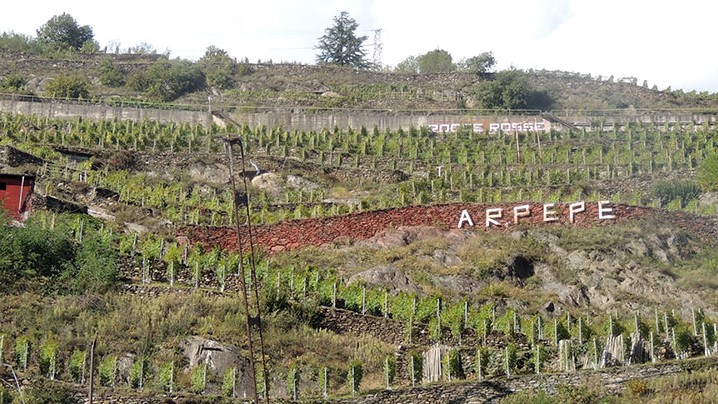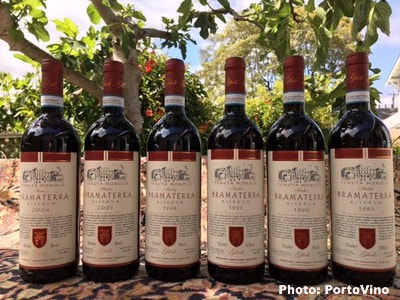Nestled in the Alps along the Swiss border, Lombardia’s Valtellina valley has a winemaking history that dates back more than 2,000 years. Chiavennasca (the local term for nebbiolo) is the star of Valtellina’s show, where steep, terraced vineyards and a distinct subalpine climate (loads of sunshine tempered by cool currents) produce some of Italy’s most unforgettable wines.

The terraced vineyards of ArPePe
The Pelizzatti family has been making chiavennasca in this locale for more than 150 years. However, that legacy was in serious jeopardy when, in 1973, Guido Pelizzatti fell ill with cancer. As a result, his four children decided (some reluctantly, some not) to sell the family brand, with disheartening results.
“The brand was destroyed by overproduction,” Guido’s granddaughter Isabella told Wine Spectator a few years ago. “It became a crap wine.”
It was Guido’s son Arturo Pelizzatti Perego who decided to take action and restore the family name. In 1984, he founded a new winery that he named for himself–ArPePe–and eventually bought back the old family cellars. (A sort of “revenge” against his siblings, Isabella called it.) Not only did he help revive the family legacy, he also was instrumental in Valtellina’s renaissance that continues to this day.
When Arturo himself succumbed to cancer in 2004, his daughter, Isabella, and her two brothers took the reins, and today, ArPePe remains the benchmark producer for these singular Alpine nebbiolos. Traditionalists to the end, ArPePe makes wines that prize grace, elegance, finesse, and complexity over oak-driven power. Their wines, crafted with meticulous restraint, bob and weave and dance and jab–no need for a knockout punch when you have that kind of style and sophistication.
The bulk of ArPePe’s grapes come from family-owned vineyards in Valtellina’s prestigious Grumello and Sassella zones. Grumello, where the winery is built directly into the slopes, features a bit more clay in the soil, accentuating the richer, fruitier notes of nebbiolo; south-facing Sassella has shallower and more craggy terrain, highlighting the grape’s minerality.
We are quite fortunate to be carrying five different ArPePe bottlings at Paul Marcus Wines, all boasting 100 percent chiavennasca (nebbiolo) grapes. The 2016 Rosso di Valtellina utilizes grapes from both Grumello and Sassella, and it packs a lot of depth and character into its light and lively frame. It’s rather impressive for an “entry-level” wine.
Moving up the ladder we have two Valtellina Superiore offerings: the 2015 Grumello Rocca de Piro and the 2015 Sassella Stella Retica. These cuvees get their grapes from 50-100-year-old vines and undergo long maceration periods before spending 18 months in large barrels and at least two years in bottle prior to release.
Finally, we have two Valtellina Superiore Riservas: the 2009 Grumello Buon Consiglio and the 2009 Sassella Rocce Rosse. These Riservas spend close to five years in large casks before mellowing in bottle for another three years. Herbaceous, earthy, flinty, and floral, these vibrant, red-fruited gems deliver the entire package and show beyond a doubt how dynamic and multilayered Alpine nebbiolo can be.
Nearly two decades after Arturo’s passing, his motto still lives on: “il giusto tempo del nebbiolo,” which means “the right time for nebbiolo” and is indicative of his family’s passion for (and patience with) their beloved chiavennasca. For more information about the extraordinary, hard-to-find wines of ArPePe, please visit us at the shop.


 These wines were properly cellared in Rome after Umberto’s passing. Paul Marcus Wines is excited to be able to share the following stellar and rare line-up of aged Bramaterra with you:
These wines were properly cellared in Rome after Umberto’s passing. Paul Marcus Wines is excited to be able to share the following stellar and rare line-up of aged Bramaterra with you: